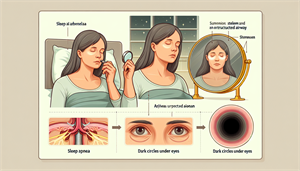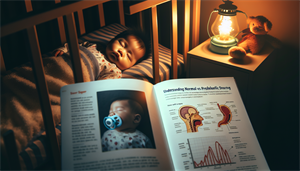
Using Pulse Oximetry To Check For Sleep Apnea
Pulse oximetry is a noninvasive method for monitoring a person's oxygen saturation. It is used to measure the oxygen level in your blood and your heart rate. A finger pulse oximeter functions by shining light through your finger. The sensors detect how much oxygen is in your blood based on the way the light passes through your finger. Pulse oximetry is the technology calculating the results to display a number on the oximeter’s screen that tells you the percent of oxygen in your blood. A finger pulse oximeter also measures your pulse rate.
Checking For Sleep Apnea
This video shows you how you can check if you have sleep apnea, using a rough estimate based on oxygen desaturation events, using pulse oximetry. It is important to note that this will not tell you if you definitely have sleep apnea and is no substitute for a doctor. Please see a doctor if you feel you have sleep apnea. This video uses the CMS50E pulse oximetry.
Oxygen Desaturation Index (ODI)
When you record your pulse oximetry, you can obtain your ODI (Oxygen Desaturation Index). ODI is the number of times per hour of sleep that your blood's oxygen level dropped from the baseline. It may not be as accurate as other ways of monitoring sleep unless the stages of sleep are also recorded. Any respiratory event during sleep with a 3-4 percent drop in blood oxygen level, lasting 10 seconds or more, is an ODI event. An example of an oxygen desaturation event would be a change from 95 to 92 percent.
Limitations of Oximetry
Pulse oximetry has many well known limitations. The amount of ambient light, skin pigmentations, nail polish usage, the temperature of the hand, interference and other factors can impact its reading. A pulse oximeter also does not know if you are asleep so the readings cannot be considered as accurate as AHI, which needs to be obtained using other technology.
Pulse Oximetry and Sleep Apnea
Sleep apnea is often measured in terms of AHI (apnea hypopnea index) per hour. This is the amount of times someone stops breathing while they sleep per hour. A pulse oximeter cannot give AHI but it can give ODI (oxygen desaturation index). ODI is an approximation of AHI and is considered a good predictor. By recording your oxygen desaturation events at night per hour and relating them to AHI, you can have an estimate for the presence of sleep apnea.
What is abnormal in pulse oximetry measurement?
In general, it's considered abnormal if the oxygen level falls


